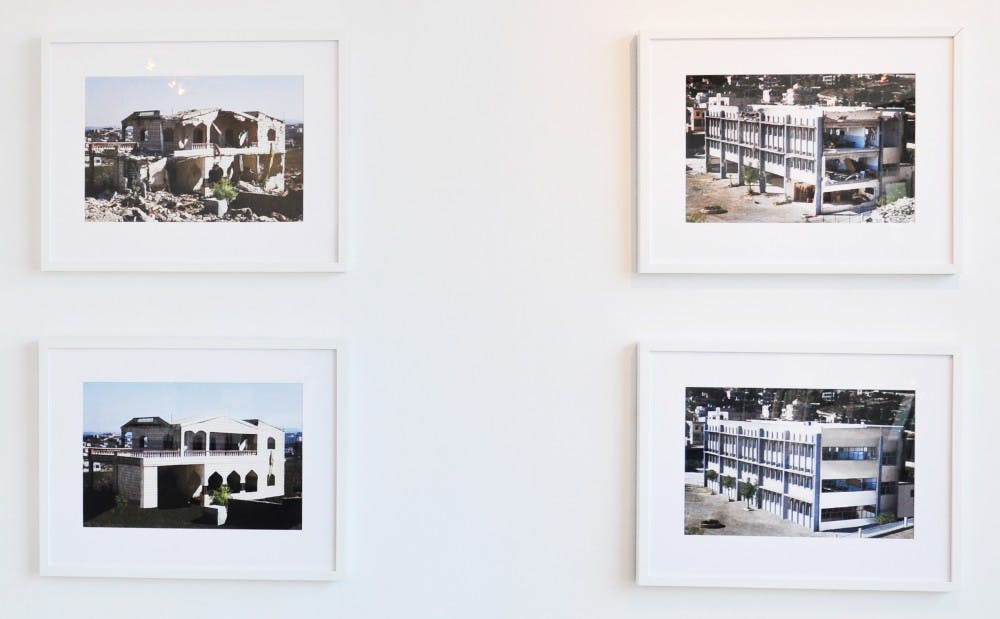A group of artists is using the simple task of cutting and pasting to reflect a much more complicated concept: global conflict.
Susanne Slavick, an art professor at Carnegie Mellon University, will hold an opening reception for her new art exhibition, “Cutting Losses,” at Hanes Art Center today.
Slavick said the idea for the show came from a book she has since published, entitled “Out of Rubble.”
“I started thinking of another sort of subset of artists who deal with the absence and loss created by war or caused by war through the actual process of cutting to reveal what has been lost — or the holes that are left,” Slavick said.
Heide Fasnacht, Lenka Clayton and the Decolonizing Architecture Artist Residency with Sara Pellegrini all contributed work to “Cutting Losses.”
As soon as Fasnacht learned about the “Out of Rubble” book project, she said she emailed Slavick about her interest.
Although it was too late for Fasnacht to be a part of the book project, Slavick still wanted her to participate in the “Cutting Losses” exhibition.
Fasnacht said she is interested in the World War II era because of her German heritage, even though her family was not present during the Nazi occupation.
Fasnacht said this artwork presents an alternative to what is typically seen in museums.



